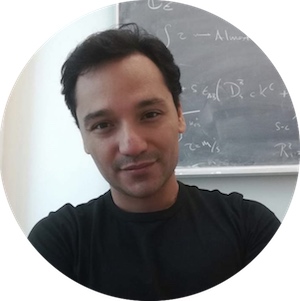Novel computational techniques are revolutionizing the way we discover new drugs. Robert Marino, CEO and co-founder of Qubit Pharmaceuticals, discusses the potential of physics to accelerate drug discovery.
Paris-based Qubit Pharmaceuticals was established in 2020 to commercialize the work of leading researchers in the computational chemistry space. This field uses computer modeling to predict how molecules behave and interact, which allows scientists to identify promising drug candidates faster than using traditional drug discovery methods. In this interview, Qubit Pharmaceuticals’ CEO, Robert Marino, talks about the opportunities that novel algorithms and advanced hardware technologies like machine learning (ML) and quantum computing open for healthcare.
Why has the pharmaceutical industry struggled with adopting digital technologies?
Pharma started investing in its digital transformation as early as everyone else, but they are dealing with very complex problems at every stage. In a sense, digital is about having exhaustive information and doing math on it. This is very hard to achieve in pharma. If you have 100 patients in a trial, these are 100 different human beings, not something homogenous. And even if molecules are not individuals, the physics that governs how they interact are complex and hard to compute.
So pharma relies on simplifications to make calculations feasible, but every simplification brings errors and uncertainty. Sometimes it works. But whenever you are dealing with complex molecules containing difficult-to-simulate atoms, like metals, simplifications drive you away from experimental results. This is why we are still far from having a fully digital pipeline for drug discovery and development. However, with recent breakthroughs in computing, we might be able to get closer.
What is your take on the potential of machine learning in drug discovery?
Machine learning is helpful for some aspects of the process, but not all. If you want to understand how molecules interact, there are two main aspects to consider. The first one is complementarity: does the key match the lock? This boils down to understanding whether a compound can fit in a protein’s targeted pocket. This question can be reasonably tackled with ML techniques such as those used in image processing.
But the key and lock question is just the beginning. There are other things to consider that ML approaches tend to ignore. In the real world, molecules have ions and metals, and there are polarisations linked to quantum effects. Most protocols for data standardization disregard the role of ions and metals, so ML models never get to learn about their existence. Moreover, ML methods ignore the dynamics of proteins. These molecules are not static; they are flexible, and their shape evolves with time. So ML is suitable for rigid proteins and molecules without metals and whenever charges and polarization play minor roles.
I worked on various ML projects in the past and had the chance to collaborate with excellent researchers in the field. From that experience, I learned that you can discover unknown things only if you have well-curated datasets. When I say well curated, I mean having world-class experts annotating data by hand for several weeks. That is why most ML projects today are working against well-known targets for which we have a lot of good data. So far, ML hasn’t found new targets or discovered something completely new against old targets, but this is precisely what pharma needs.
Nonetheless, I think that ML can play a significant role in optimizing compounds by looking at several properties simultaneously—activity, toxicity, etc. But you must always be sure that the data you use to train your model is relevant.
What is your approach to drug discovery at Qubit Pharmaceuticals?
We simulate molecules relying on the fundamental laws of physics. We tackle this challenge with a multilayered strategy. First, we deploy a high-resolution physics model that can simulate complex effects like polarization charges, protein flexibility, and allosteric modulation. These computations are valuable but very costly, so you must use them sparingly.
Then comes the second layer. You need an engine that runs computations fast to look at the system’s dynamics. Some excellent tools are available out there, like Gromacs and Schrodinger. These are capable of sampling very fast but limited to certain types of targets to be able to maintain good resolution. We found a way to increase the resolution and expand the applications without making computations unfeasible.
Finally, there is a third aspect to consider. The number of possible drug candidates, called the chemical space is enormous. Even if you have a fast and accurate tool, you can still get lost. Here, we rely on insights from statistical physics to look for compounds in the right regions and converge fast. This way, with limited computing power, we can efficiently navigate the chemical space looking for the right solution.
Are there other players following a similar approach?
There are two leaders in this field. Schrödinger Inc. jump-started the field in the ‘90s and had an IPO last year. The firm was the first to deploy physics-based tools at scale and cater to the requirements of drug discovery. Schrödinger has excellent physics foundations and a solid academic background. However, its core technology was set up 30 years ago, when it was impossible to simulate polarization at scale. Schrödinger is working on it, but it isn’t native to the firm’s core architecture. It will be interesting to see what Schrödinger proposes in the coming years.
The second one is Silicon Therapeutics, which was recently acquired by Roivant Science. This is a very interesting merger. Access to Roivant’s knowledge in biology and internal data will undoubtedly open interesting new directions for Silicon Therapeutics.
What makes this physics-driven approach promising?
Our multi-layered approach is working rather well. In March this year, we launched a program to design novel treatments for Covid-19. We modeled the SARS-CoV-2’s main protease to study its shape and identify relevant binding pockets to avoid missing essential interactions. The computations were completed in just 15 days. It might seem slow, but it took the same time for Fugaku—the world’s largest supercomputer—to perform a comparable task, while we relied on a relatively modest setup.
Using this result, we were able to design a very interesting compound active against the main protease in just three months. We didn’t rely on any ML to generate compounds. Instead, we used a combination of detailed simulations and traditional medicinal chemistry. When you provide drug designers with detailed information about the target they can move faster and be more creative.
Why are physics-based methods using century-old equations yielding such results only now?
It was critical to come up with clever simplifications. Our scientific founders made important contributions in this regard by discovering how to map quantum effects onto classical hardware efficiently. But the most important limiting factor was computing power. Fortunately, hardware capabilities are exploding. We have been fortunate that NVIDIA entered into the video game market and drove the development of Graphics Processing Unit (GPUs). GPUs brought massive acceleration up to several thousands of times faster than central processing units (CPUs), and they are becoming a commodity. Moreover, quantum computers are rapidly improving. I don’t expect a complete switch to quantum computing any time soon. However, using quantum processors to solve particular parts of the workflow efficiently is likely to happen in the next three to five years.
Are you currently exploring applications of quantum computing for drug discovery?
Yes, we have a close partnership with Pasqal, a French quantum computing startup. They have a very interesting approach to quantum computing which seems to fit several of our requirements. In particular, they can scale the technology fast. We don’t plan to do quantum chemistry on the entire molecule, even with this type of hardware. Instead, we will use it to solve some parts of the simulation that require far too many classical resources. Still, there is no clear winner in the quantum race, and we plan to collaborate with various vendors to explore what the technology can do for us.
What do you see as the key applications of your technology?
That is a crucial point. Understanding a protein, defining a ligand, and so on is not the most essential part of the process. What matters is to develop something that can cure people. I believe that we can contribute to discovery programs involving hard-to-simulate targets, like G-protein-coupled receptors (GPCRs). They play a role in several diseases and account for about 60% of drugs in the market, but they are too complex and flexible to simulate with standard techniques. This means that computational methods play a minor role in the discovery process. Yet, they are well within our simulation capabilities. But I want to stress that it is key to collaborate with people with domain knowledge to translate computational insights into clinical applications.
What do you think will be the role of European companies in developing new computational techniques for drug discovery?
Europe is often underrepresented in the entrepreneurial space. We have lagged in the tech revolution and are always trying to catch up. This applies to various AI and ML applications. To be frank, I wouldn’t recommend someone to launch a new AI company unless they made a real breakthrough in the field. However, I think that the new wave of deep tech presents a unique opportunity in Europe. Science-based innovations will play a key role in tackling future challenges, and Europe has much to offer in this area. Instead of trying to catch up, we should be truly innovative. Europe has excellent groups on physics, mathematics, quantum technology, etc. We should learn how to bring new science with the traditional markets where the needs are clear. And if it doesn’t work the first time, try again. European companies need to understand that failure is just part of the game.
 Alvaro Véliz Osorio was born in Mexico City to Guatemalan parents. After a PhD in Physics and Mathematics, he worked as a research fellow at the Mandelstam Institute, Queen Mary University of London, and Jagiellonian University. Alvaro now works as a science and technology communicator and a fundraising consultant, mostly centered on quantum technology and artificial intelligence.
Alvaro Véliz Osorio was born in Mexico City to Guatemalan parents. After a PhD in Physics and Mathematics, he worked as a research fellow at the Mandelstam Institute, Queen Mary University of London, and Jagiellonian University. Alvaro now works as a science and technology communicator and a fundraising consultant, mostly centered on quantum technology and artificial intelligence.





